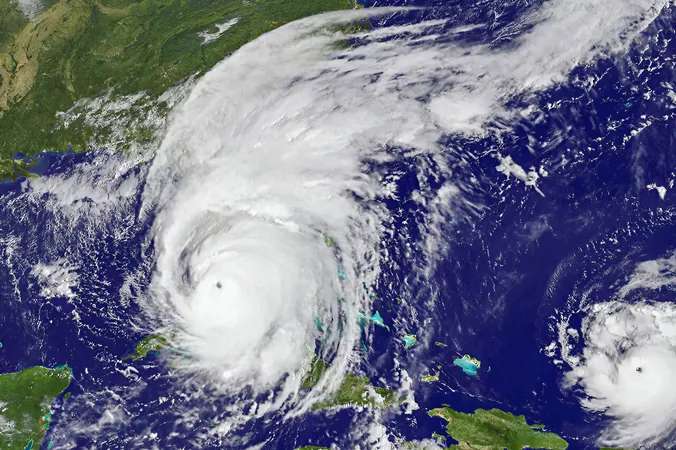
The Hidden Danger: Mosquito Populations Skyrocket After Hurricane Irma, Raising Health Concerns for South Florida Residents
2024-09-26
The Impact of Hurricane Irma
When Hurricane Irma struck Florida on September 10, 2017, it left a trail of destruction: over 600 cellphone towers went down, nearly 900,000 residents were without power, and parts of Miami-Dade County were submerged in over 6 feet of floodwaters. Agricultural damages alone amounted to a staggering $245 million. However, the aftermath of this powerful storm revealed a less obvious peril lurking beneath the surface: a dramatic surge in mosquito populations, posing a significant health threat to the community.
Study Findings
A recent study conducted by Imelda Moise, a health geographer at the University of Miami, has uncovered alarming findings regarding mosquito populations following the hurricane. "The interplay of warmer temperatures, high humidity, and nutrient-rich floodwaters created a breeding paradise for mosquitoes," said Moise, the lead author of the research published in the journal Scientific Reports.
Through meticulous analysis of mosquito data from 2016 to 2018, the research team observed a staggering increase: mosquito captures soared an astonishing 7.3 to 8 times higher during a four-week period post-Irma compared to the same timeframe in the previous and subsequent years. Out of 32 mosquito species accounted for, the Culex nigripalpus emerged as the predominant carrier, responsible for 70.4% of all captured specimens. Known as a key vector for diseases, this unassuming mosquito can breed year-round in South Florida’s warm climate, particularly thriving during the summer and early fall.
Rapid Resurgence
What's more shocking is the rapid resurgence of these pests. Contrary to the common belief that heavy rains would flush mosquito breeding sites away, the study revealed that populations rebounded remarkably quickly, often within a week after the storm. “We initially thought flooding would reduce mosquito numbers, but our findings suggest just the opposite,” noted Moise.
Implications for Health
The implications of these findings are pressing, especially as Florida braces for future storms. With Hurricane Helene approaching the region, this research serves as a critical reminder for residents in hurricane-affected areas to remain vigilant. The study emphasizes the importance of protecting against both nuisance mosquitoes and those capable of transmitting severe diseases such as West Nile virus, Zika, and Saint Louis encephalitis.
Historical Comparisons
Previous studies have drawn similar parallels; for instance, researchers observed increased mosquito activity in New Orleans following Hurricane Katrina in 2005, and spikes in Aedes aegypti populations in Puerto Rico after Hurricane Maria in 2017.
Call for Action
Moise’s research is groundbreaking, marking the first extensive investigation of pre- and post-hurricane effects on mosquito populations specifically in Miami-Dade. She urges urban planners and public health officials to consider how community design and population density can influence the risk of mosquito outbreaks, especially in densely populated neighborhoods that face greater vulnerability post-disaster.
As Moise aims to undertake new research linking vector-borne diseases and hurricane impacts on coastal cities, she stresses the urgent need for evidence-based policies that prioritize community engagement, address equity in health risks, and utilize integrated pest management strategies. These steps are essential not only for mitigating the immediate threats posed by mosquitoes but also for fostering healthier urban environments vital for post-hurricane recovery.
Conclusion
With climate change intensifying the frequency of hurricanes and the associated health risks, residents must stay informed and prepared. The next storm could be just around the corner, and the hidden dangers within those floodwaters could have long-lasting effects on public health. Stay safe, stay informed, and remember: as the storm clouds clear, the buzzing begins.


 Brasil (PT)
Brasil (PT)
 Canada (EN)
Canada (EN)
 Chile (ES)
Chile (ES)
 España (ES)
España (ES)
 France (FR)
France (FR)
 Hong Kong (EN)
Hong Kong (EN)
 Italia (IT)
Italia (IT)
 日本 (JA)
日本 (JA)
 Magyarország (HU)
Magyarország (HU)
 Norge (NO)
Norge (NO)
 Polska (PL)
Polska (PL)
 Schweiz (DE)
Schweiz (DE)
 Singapore (EN)
Singapore (EN)
 Sverige (SV)
Sverige (SV)
 Suomi (FI)
Suomi (FI)
 Türkiye (TR)
Türkiye (TR)